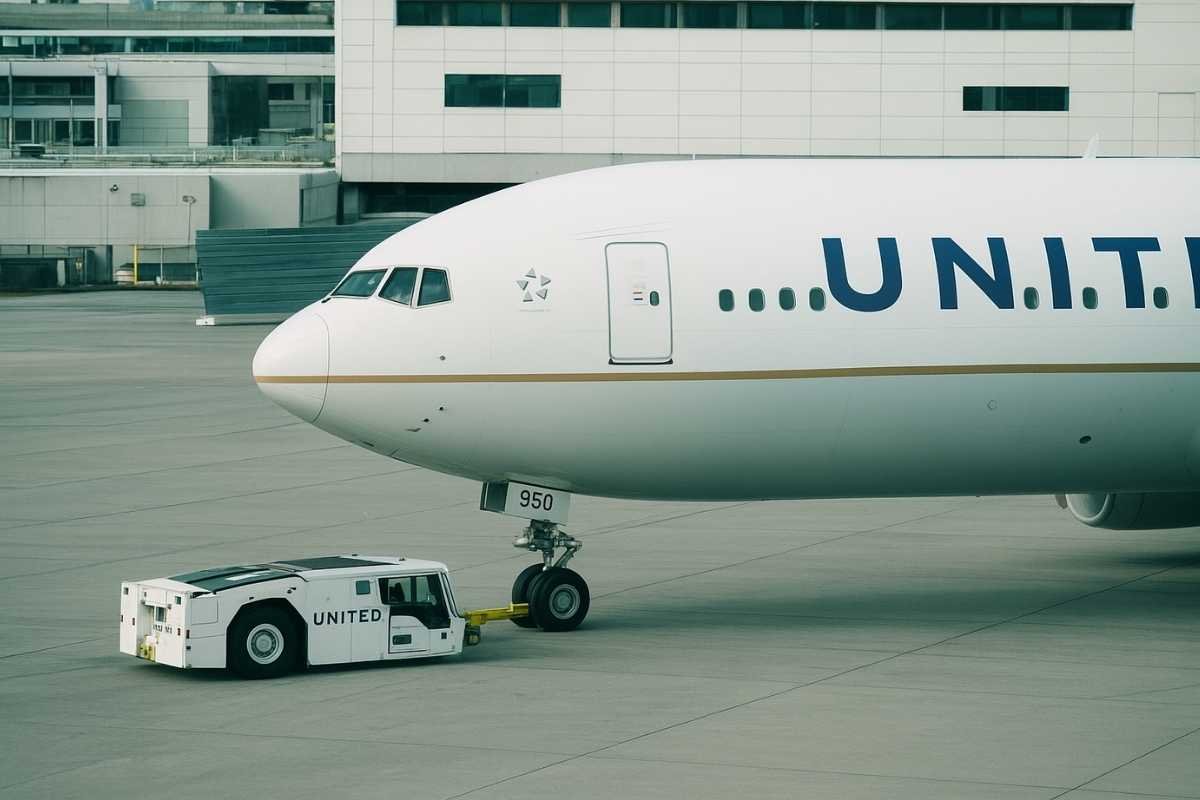On a recent flight from Barcelona to Chicago passengers aboard United Airlines flight ua770 emergency diversion faced an unexpected turn of events when the journey was interrupted.
The incident unfolded during what had begun as a routine day in air travel leaving many onboard with questions. Aviation safety procedures were quickly put into motion to safeguard everyone on the aircraft.
Crew members acted in line with established diversion protocols to ensure that passenger safety remained the top priority. This sudden change in flight route brought the aircraft to a different airport than planned.
While such occurrences are rare, the situation highlighted the importance of trained personnel and coordinated emergency response.
Understanding United Airlines Flight UA770 Emergency Diversion!
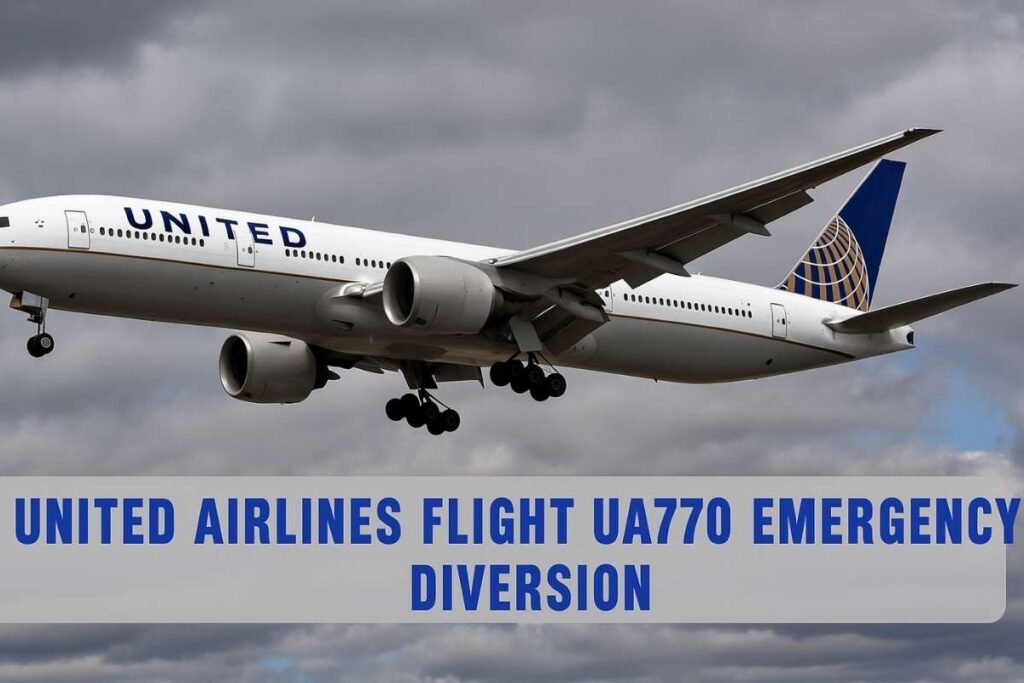
The United airlines flight ua770 emergency diversion describes an in flight situation where the aircraft traveling from Barcelona to Chicago was redirected to another airport.
This action was taken after cockpit instruments signaled a potential technical issue requiring immediate attention. Diversion protocol in airline operations ensures passenger safety remains the top priority at all times.
Air traffic control coordinated closely with the flight crew to guide the aircraft along a new route. Emergency services were placed on standby at the diversion airport to support a secure landing.
Such responses reflect established aviation safety standards in handling unexpected incidents with precision, care and professionalism.
Why Do Emergency Diversions Happen in Air Travel?
Emergency diversions occur when flight crew determine that continuing on the planned route may pose a safety risk. This decision can be prompted by technical issues, medical emergencies or airspace restrictions.
In the case of United airlines flight ua770 emergency diversion the cause was a cockpit alert indicating a possible system irregularity. Aviation safety regulations require immediate evaluation and if necessary a change of course.
Diversion protocol includes notifying air traffic control and preparing the cabin for landing at an alternate airport. These steps ensure both operational control and passenger safety at all times.
How Flight Crew Manage an Inflight Incident?
Flight crew training equips pilots and cabin staff to respond swiftly and effectively to unexpected events. When an inflight incident arises, as with United airlines flight ua770 emergency diversion they follow strict safety protocols.
Pilots assess the situation using aircraft systems data while maintaining constant communication with ground control. Cabin crew secure the cabin ensure passengers comply with safety measures and provide reassurance.
Crew coordination is vital to execute emergency procedures smoothly. This teamwork allows airlines to maintain high safety standards and prevent escalation during any operational challenge.
What Role Does Air Traffic Control Play in a Diversion?
Air traffic control ATC is central to any diversion process in commercial aviation. During United airlines flight ua770 emergency diversion ATC provided immediate routing adjustments to guide the aircraft to a suitable airport.
Controllers ensure safe separation from other flights and coordinate landing priorities with the diversion airport authority. They also communicate critical updates on weather, runway availability and emergency services readiness.
This collaboration between pilots and ATC minimizes delays in response time. Effective ATC coordination is a core element of diversion protocol and aviation safety management.
What Happens When a Flight Lands at a Diversion Airport?
Once a diverted aircraft lands ground teams follow established aviation safety measures. During United airlines flight ua770 emergency diversion emergency services were positioned at the runway as a precaution.
Airport authority personnel oversee safe disembarkation if necessary, while maintenance crews inspect the aircraft. Passengers may remain onboard until clearance is given by operational staff.
The airline ground team coordinates alternative travel arrangements to reduce disruption. This process ensures that passenger safety and welfare are prioritized even after the flight has landed.
Why Passenger Communication Matters During Emergencies?
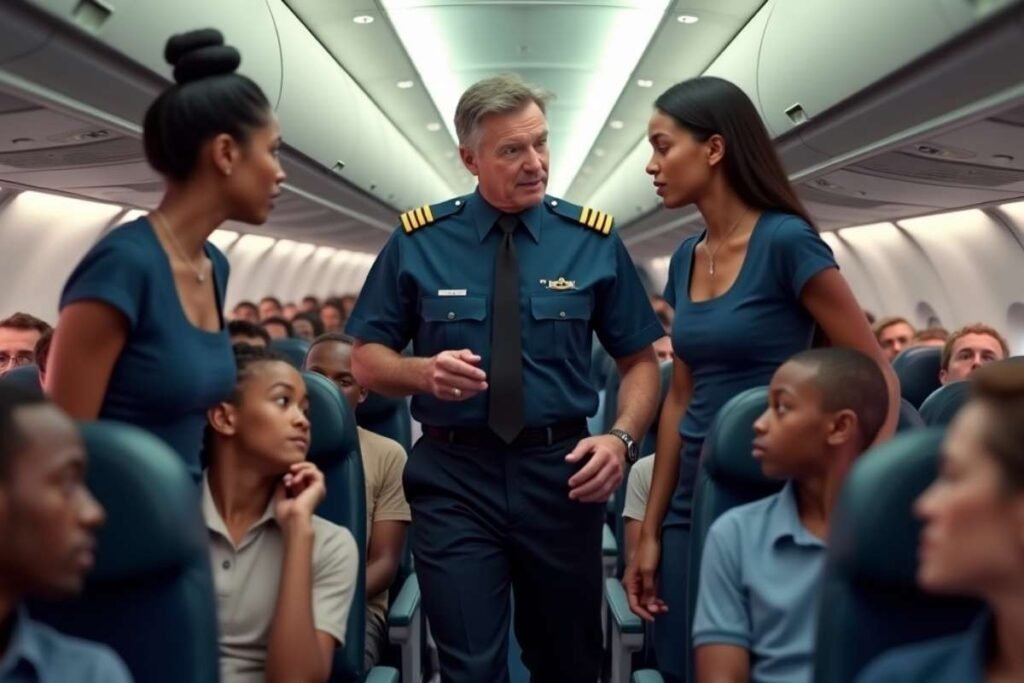
Clear passenger communication is essential when an inflight incident disrupts travel. During United airlines flight ua770 emergency diversion regular announcements from the cockpit kept travelers informed.
Cabin crew supplemented this with one on one reassurance and instructions. These updates reduce anxiety, promote cooperation and help passengers follow safety protocols.
Transparent communication also reinforces passenger trust in the airline handling of the situation. In any airline operation information flow is a key component of crisis management. It allows for a more organized and calm response from everyone onboard.
How Aircraft Are Inspected After an Emergency Diversion?
After United airlines flight ua770 emergency diversion the aircraft underwent a full inspection by airline maintenance teams and aviation authority officials.
Engineers examined aircraft systems that triggered the cockpit alert to ensure no hidden faults remained. Regulatory compliance requires thorough incident reporting and verification before the aircraft can return to service.
Inspections may involve system diagnostics, component checks and safety equipment assessments. These procedures safeguard future operations and maintain aviation safety standards.
By addressing potential risks immediately, airlines protect both passengers and crew on subsequent flights, ensuring safety and operational reliability.
Events Leading to the Diversion!
United Airlines Flight UA770 was cruising on its planned flight route when cockpit indicators alerted the pilots to a potential technical issue.
These systems form part of an aircraft constant monitoring process designed to detect irregularities before they can escalate.
The flight crew immediately assessed the situation and followed emergency procedures outlined in airline operations manuals. In consultation with air traffic control the decision was made to divert the aircraft to the nearest suitable airport.
Passenger communication was clear and timely ensuring travelers understood the reason for the sudden change. This swift action allowed the crew to maintain operational efficiency and prioritize air travel safety.
Passenger Experience Onboard!
For many travelers the announcement of an inflight incident brought a mix of emotions. Some passengers exchanged concerned glances while others relied on reassurances from the flight attendants.
Safety measures were reinforced and seatbelt compliance was strictly observed. Passenger welfare was at the forefront with crew members providing assistance to anyone feeling distressed.
Calm instructions and steady updates from the cockpit contributed to maintaining order in the cabin. The experience served as a reminder of the role passenger communication plays during a distressed flight situation.
Despite the disruption, cooperation between crew and travelers helped keep the atmosphere controlled and calm throughout the entire incident.
Coordination with Air Traffic Control!
Once the decision to divert was confirmed flight communications with air traffic control became essential. Controllers provided updated flight paths airspace management clearances and coordination with the airport authority at the diversion site.
This ensured a secure landing environment for the incoming aircraft. Ground based teams were alerted to the inbound distressed flight and prepared to receive it.
The cooperation between cockpit crew and controllers followed aviation regulations designed for such scenarios.
Effective crisis communication between air and ground parties is a core part of diversion plans in commercial aviation. These coordinated efforts support both passenger safety and operational readiness.
Emergency Landing at Diversion Airport!
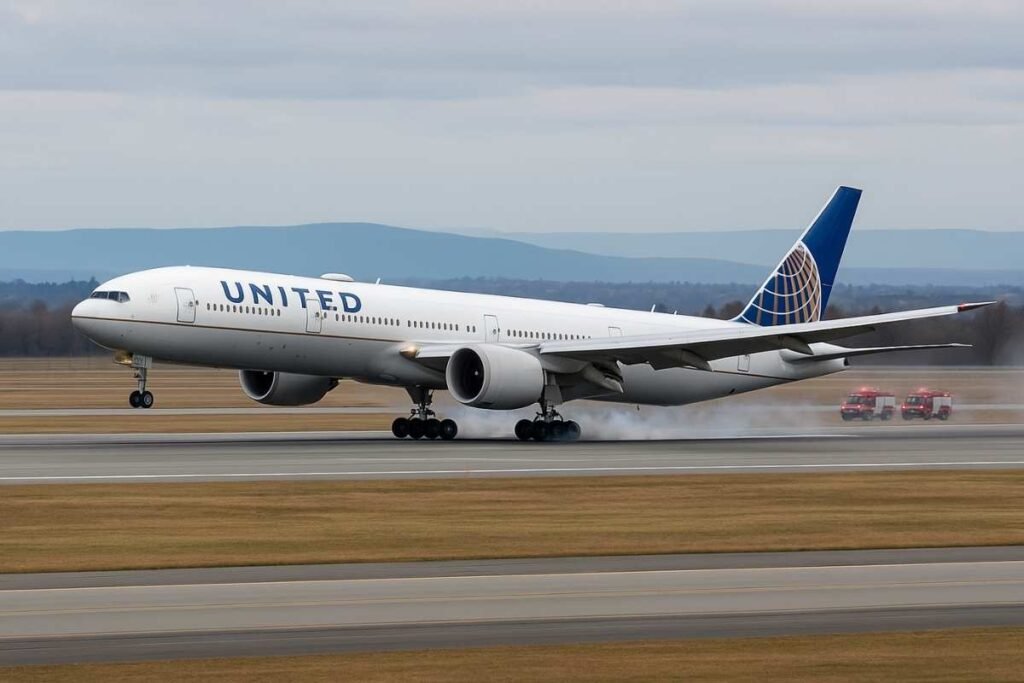
The aircraft approached the diversion airport under guidance from air traffic control and in line with emergency landing procedures.
Emergency services, including fire trucks and medical teams were stationed nearby as a precautionary measure. The secure landing was completed without further complications marking the end of the immediate inflight incident.
Once at the gate passengers remained onboard until airport authority personnel confirmed safety protocols had been fully and properly met.
Aircraft maintenance crews began their initial inspections to determine the source of the issue. These steps form part of the standard aviation safety process for any emergency landing.
Airline Response and Passenger Support!
United Airlines quickly issued an official statement acknowledging the diversion of Flight UA770 and emphasizing passenger safety as their highest priority.
They expressed appreciation for the flight crew professionalism and the calm cooperation of passengers. Airline response teams coordinated with airport authority representatives to arrange alternative travel plans.
Travel disruption was minimized where possible with rebooked itineraries and accommodations provided to those affected.
Passenger assistance desks were made available for questions and needs following the diversion. By maintaining transparent communication the airline worked to preserve passenger trust and its operational reputation.
Technical Evaluation of the Aircraft!
Following the diversion aircraft maintenance specialists conducted a thorough inspection. Incident reporting procedures required detailed documentation of the inflight incident for review by aviation authority officials.
Aircraft systems were examined to identify any irregularities that might have triggered the cockpit alert. Safety protocols require that no aircraft returns to service until regulatory compliance checks are complete.
This process involves multiple layers of verification to ensure operational safety standards are upheld. The incident investigation aims to confirm that both the aircraft and its systems meet the strict requirements of aviation safety regulations.
Impact on Operations!
The diversion caused adjustments within airline operations to accommodate the changed flight itinerary. Scheduling teams coordinated with other flights to manage potential flight delays linked to the diversion.
Airport diversion procedures require close alignment between operational teams at both the original destination and the diversion site.
While such events may disrupt operational efficiency aviation safety remains the overriding concern. Airline policies ensure that all safety measures are given precedence over time-related considerations.
These procedures, though rare in occurrence are part of established contingency planning in modern commercial aviation operations.
Passenger Welfare Measures!
Throughout the incident passenger welfare was supported through clear communication and attentive service. Flight crew training includes scenarios covering emergency procedures and passenger assistance requirements.
In such circumstances ensuring that travelers feel informed is a critical component of crisis management. Passenger safety protocols involve both physical measures such as securing the cabin and emotional support such as reassurance from the crew.
By combining technical competence with compassionate service airlines maintain high safety standards. This approach also strengthens passenger confidence during unexpected changes in travel plans.
Role of Aviation Regulations!
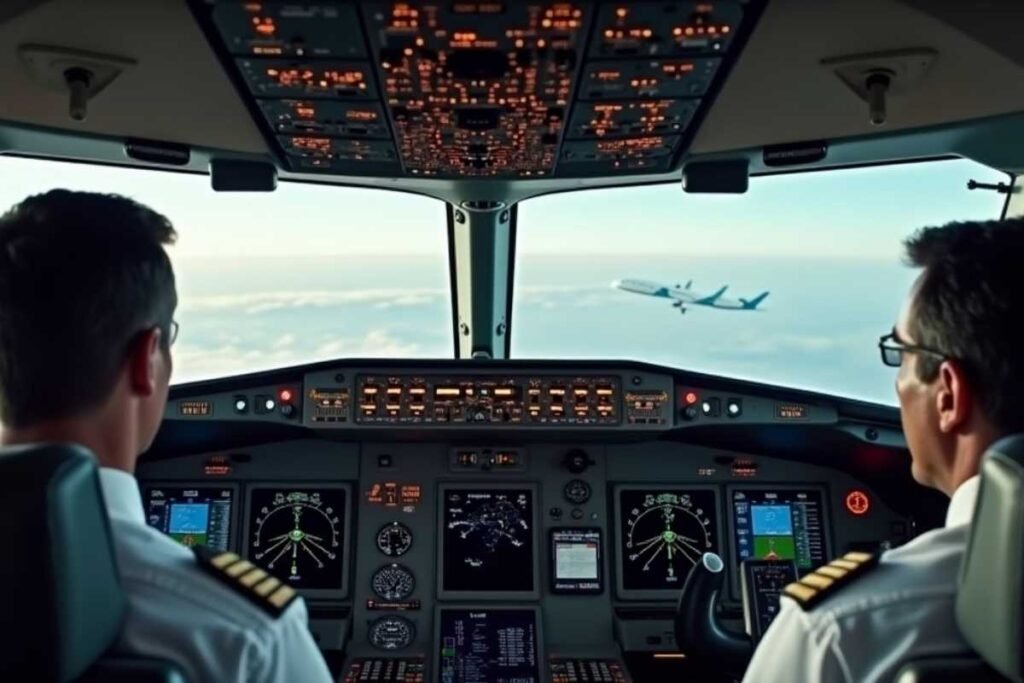
Aviation safety regulations govern every step of an emergency diversion. From the moment a cockpit alert signals a potential problem crews act under the framework of these safety protocols.
Regulatory compliance ensures that diversion plans meet strict standards set by aviation authority bodies. These guidelines cover everything from air traffic control coordination to emergency landing site preparation.
They also dictate post incident reporting and aircraft inspection processes. By following established aviation safety measures airlines maintain a consistent and reliable approach to managing inflight incidents. This reinforces the foundation of air travel safety for passengers worldwide.
Conclusion
The United airlines flight ua770 emergency diversion serves as a clear example of how swift decision making and strict adherence to aviation safety procedures can protect passengers during unexpected events.
Every stage of the incident, from cockpit alerts to the secure landing reflected coordinated efforts between the flight crew, air traffic control and ground teams.
Passenger welfare was maintained through clear communication and professional support. Post landing inspections and regulatory compliance checks ensured the aircraft safe return to service.
Such events highlight the critical role of training, planning and collaboration in airline operations. While diversions may disrupt travel safety remains the unwavering priority in commercial aviation.
FAQs
What caused the diversion of Flight UA770?
Pilots received a technical alert and diverted the aircraft as a precautionary safety measure.
Were passengers in danger during the incident?
There were no reports of injuries and safety protocols were followed throughout the flight.
Where did Flight UA770 land after diverting?
The aircraft landed at the nearest suitable airport prepared to handle the emergency.
What happens to the aircraft after a diversion?
It undergoes thorough inspection and maintenance before returning to service.
Will passengers be compensated for the delay?
Airlines typically provide rebooking options and assistance based on company policies.

